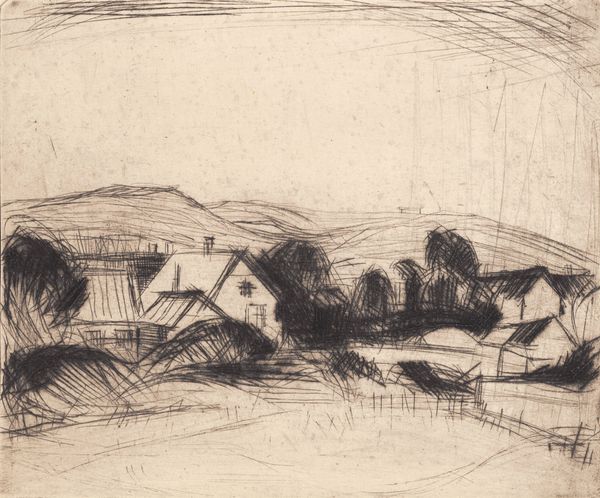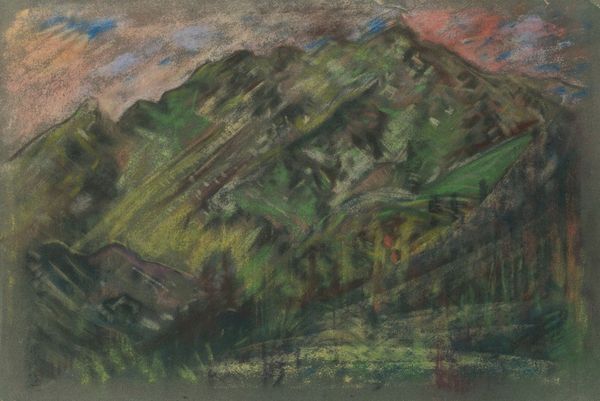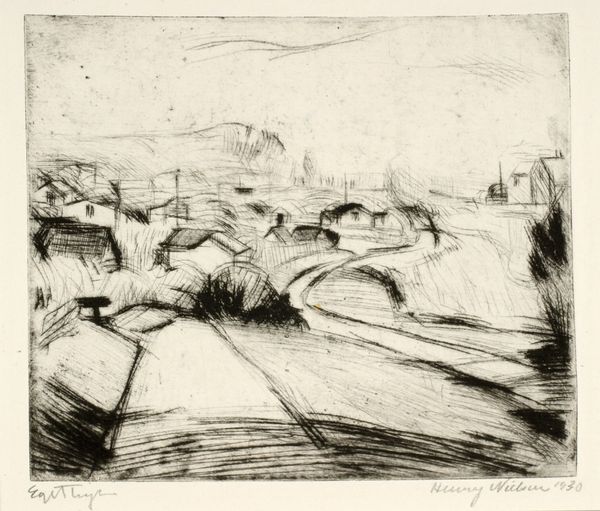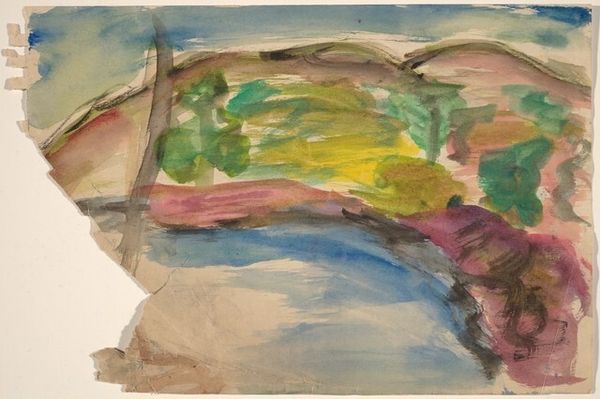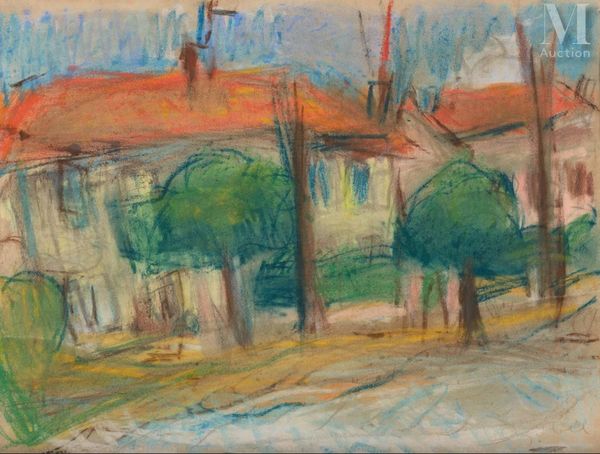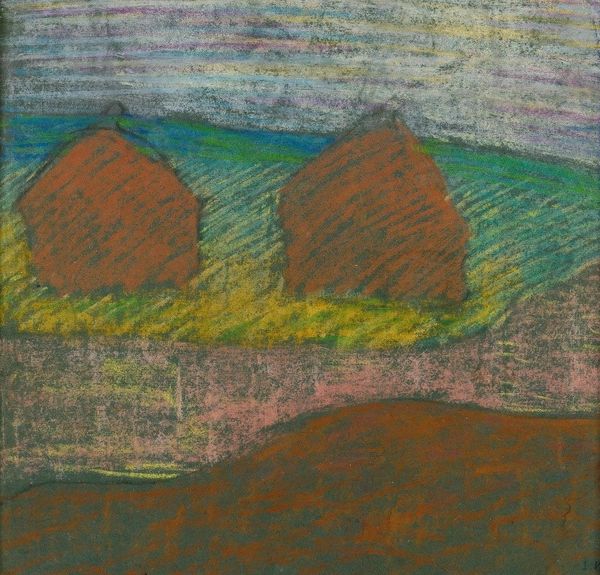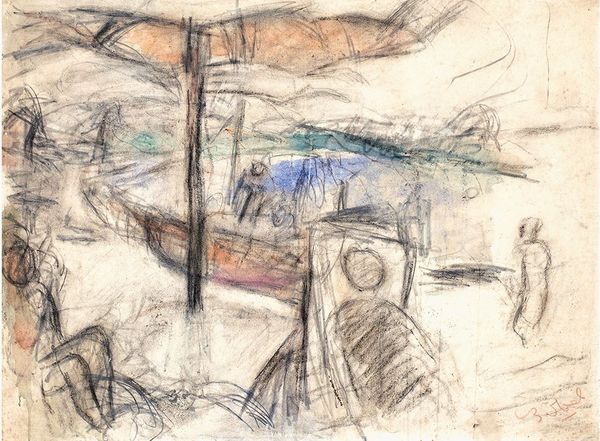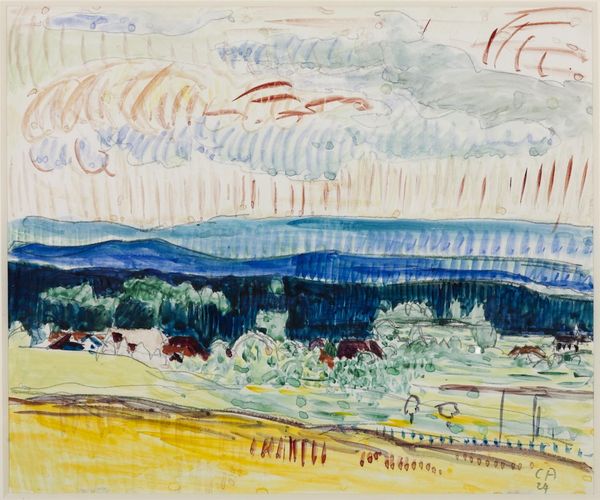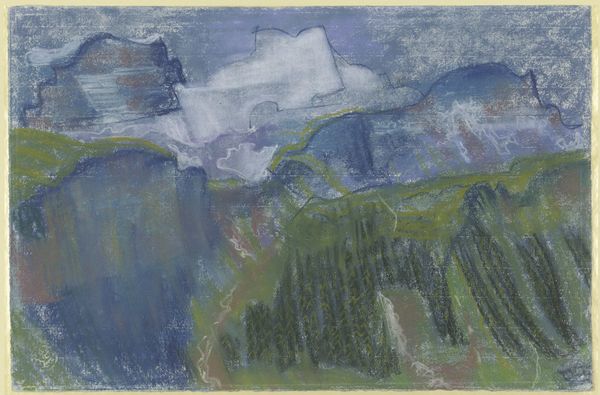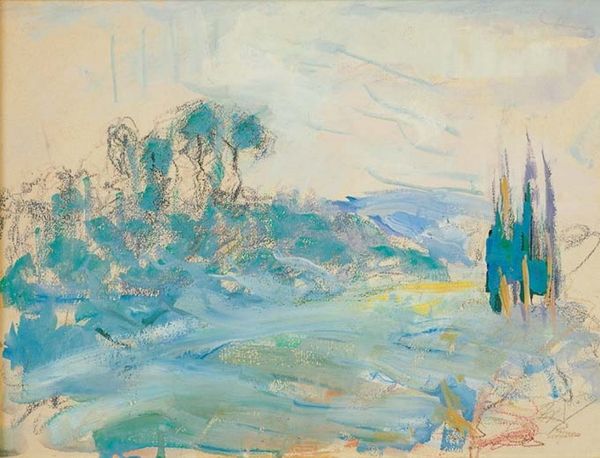
drawing, pastel
#
drawing
#
landscape
#
pastel chalk drawing
#
expressionism
#
cityscape
#
pastel
#
northern-renaissance
Copyright: Public Domain: Artvee
Curator: Edvard Munch’s "Village by the Sea," a pastel drawing likely created between 1909 and 1911. Editor: There's something dreamlike about it, almost a faded memory. The color palette is so muted and spare; the hazy blues dominate. Curator: Munch's choice of pastel as medium is particularly important, you know. It lends to a softer, almost fleeting quality. Perhaps reflecting the fragility of memory, or the transient nature of seaside life. It certainly departs from his more stark, iconic canvases. Editor: True. We typically associate Munch with the anxieties of modern life, but there is very little anxiety evident in this pastel work. I see this as representing an oppressive harmony, though: these pastel hues work together almost too well, hinting perhaps that conformity and cultural expectation still constrict, even in idyllic coastal villages. Curator: Or perhaps the houses in the artwork point to how architecture, through repetitive forms, influences our subconscious recognition of a place. Repetition creates rhythm; what seems “oppressive” to you might represent continuity. The familiar visual comfort one finds in a known location. Editor: And, from another view, the houses become symbolic stand-ins for individuals, closely aligned within a system that promotes uniformity. Do we have any historical clues on the economy and culture of the coastal town Munch may have depicted? Was Munch looking at, say, fishing economies and their impact on social structures? Curator: I don’t think there's documentation for that exact specificity. However, in many Northern-Renaissance-influenced works, villages act as small-scale microcosms representing societal norms, family life, and communal bonds, not always positively. Munch was indeed preoccupied with the human condition, with the weight of such structures. Editor: I can understand that. Even here, then, those little buildings could subtly critique society through his characteristic exploration of loneliness, existential angst and conformity that we read into Northern Renaissance imagery. This pastel, then, still manages to quietly evoke feelings of societal expectations and their burden, and just when you thought it was simply the beauty of a coastal escape. Curator: Yes, absolutely. The power of art, right? It reveals these intricate layers even within seemingly simple and quiet renderings.
Comments
No comments
Be the first to comment and join the conversation on the ultimate creative platform.


